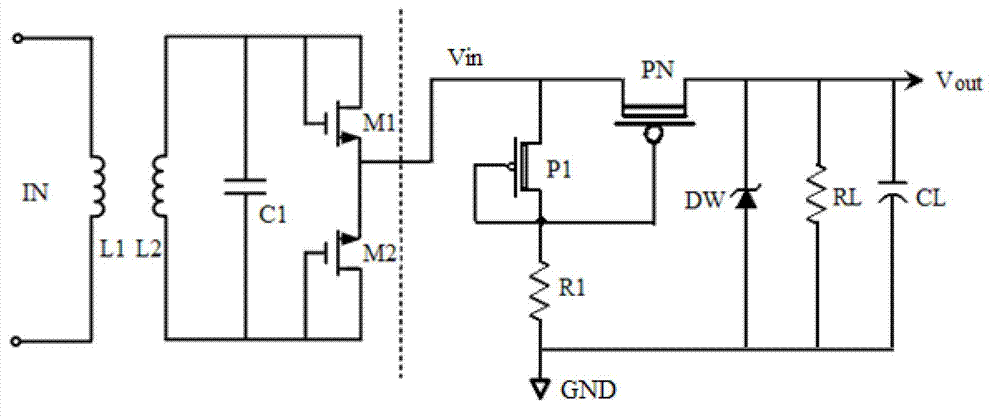Self-biased constant-current voltage stabilizing circuit
A voltage stabilizing circuit and self-biasing technology, which is applied in the field of electrical signal processing, can solve problems such as low input impedance of rectifier circuits, amplitude modulation signal loss, etc., and achieve the effects of simple circuit structure, signal loss reduction, and simplified circuit structure
- Summary
- Abstract
- Description
- Claims
- Application Information
AI Technical Summary
Problems solved by technology
Method used
Image
Examples
Embodiment Construction
[0014] figure 1 It is the schematic diagram of the existing voltage regulator circuit. Its working principle is that the characteristic of the voltage stabilizing device (as shown in the figure, Zener tube or Zener tube DW) is that when the voltage at both ends reaches the voltage regulation value (set to Vw), it can absorb any large Current (within the rated power range) and the voltage hardly rises, so when the input voltage Vin is higher than the regulated value Vw, no matter how the input voltage Vin rises, the voltage across the voltage regulator device is always stable at the regulated value Vw, and The excess voltage will drop across resistor R0.
[0015] see figure 2 As shown, in the following examples, the self-biased constant current regulator circuit, in figure 1 Improvements are made on the basis of the voltage stabilizing circuit shown to form an improved self-bias constant current voltage stabilizing circuit; including: input signal detection module, series c...
PUM
 Login to View More
Login to View More Abstract
Description
Claims
Application Information
 Login to View More
Login to View More - R&D
- Intellectual Property
- Life Sciences
- Materials
- Tech Scout
- Unparalleled Data Quality
- Higher Quality Content
- 60% Fewer Hallucinations
Browse by: Latest US Patents, China's latest patents, Technical Efficacy Thesaurus, Application Domain, Technology Topic, Popular Technical Reports.
© 2025 PatSnap. All rights reserved.Legal|Privacy policy|Modern Slavery Act Transparency Statement|Sitemap|About US| Contact US: help@patsnap.com


